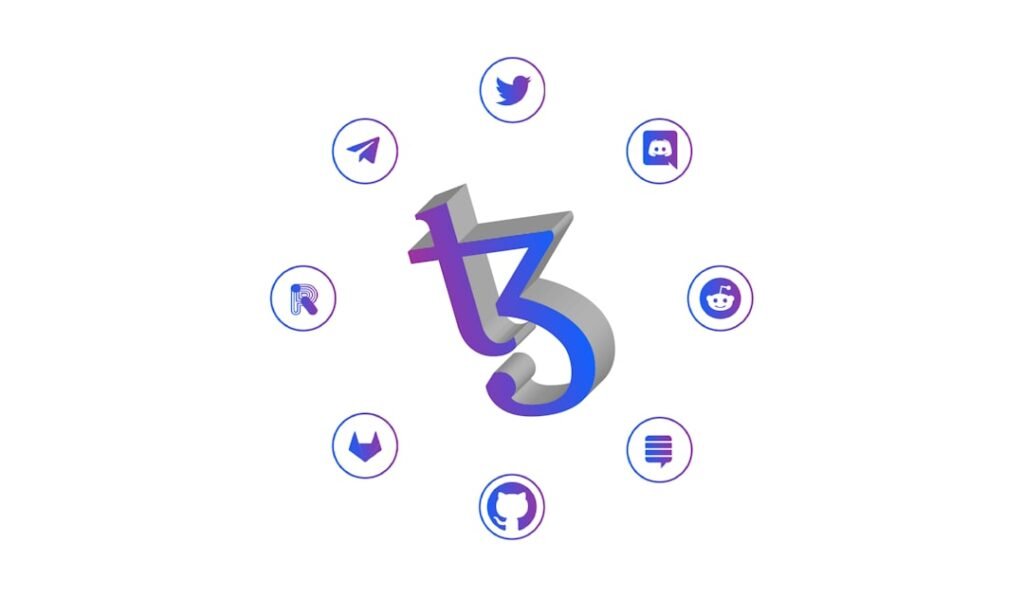In the world of high-stakes investment, the most dangerous risk isn’t market volatility; it’s the illusion of control. For decades, the ubiquitous spreadsheet has been the trusted sidekick of investment managers, family offices, and corporate treasurers. It’s familiar, flexible, and deceptively simple. Yet, in today’s hyper-connected, multi-asset universe, relying on manual tracking is like navigating a superhighway with a horse and cart. It’s not just inefficient; it’s a recipe for disaster.
The modern portfolio is a complex tapestry woven from global equities, fixed-income securities, private equity funds, direct real estate holdings, art, collectibles, and now, a growing allocation to digital assets. Manually aggregating data from dozens of disconnected sources—custodian banks, brokerage accounts, crypto exchanges, and property managers—is a Herculean task. It’s a tedious, error-prone process that consumes thousands of hours, obscures true performance, and leaves you perpetually looking in the rearview mirror.
This operational drag isn’t just a nuisance; it’s a massive, unquantified cost. It’s the cost of missed opportunities because data wasn’t available in time. It’s the cost of compliance breaches from overlooked investment restrictions. It’s the cost of flawed strategic decisions based on stale, inaccurate information.
The solution is a paradigm shift in thinking and technology: the modern Asset Management System (AMS). This is not merely software; it is the central nervous system for your entire investment operation. A top-tier AMS doesn’t just digitize your spreadsheets; it automates, analyzes, and empowers, delivering a transformative efficiency gain that can exceed 300%. This is not hyperbole. It’s a quantifiable revolution in three critical dimensions: time savings, decision quality, and risk mitigation.
This analysis deconstructs how an elite asset management system achieves this triple-digit boost, moving you from the chaos of manual tracking to the clarity of intelligent, automated control.
The Hidden Tax of Manual Inefficiency
Before exploring the solution, it’s crucial to diagnose the full extent of the problem. Manual asset tracking, primarily through spreadsheets, imposes a hidden “tax” on your operations that stifles growth and invites risk.
| Pain Point | Manifestation in Manual Operations | Strategic Consequence |
|---|---|---|
| Data Integrity Catastrophe | Copy-paste errors, broken formulas, incorrect currency conversions, typos in manual entries. | Flawed performance calculations, incorrect net asset value (NAV), and a complete loss of trust in the data. |
| Excruciating Time Sink | Highly skilled analysts spend 50-70% of their time on low-value data collection and reconciliation instead of high-value analysis and strategy. | Sky-high operational costs, analyst burnout, and a chronic inability to focus on alpha-generating activities. |
| Complete Lack of Timeliness | The “master spreadsheet” is only updated monthly or quarterly. By the time it’s complete, the data is already historical fiction. | Inability to react to market opportunities or emerging risks. Strategic planning is based on a snapshot of the past, not the reality of the present. |
| Compliance Russian Roulette | Investment mandates, concentration limits, and regulatory restrictions are tracked manually, making it nearly impossible to monitor them in real-time. | High risk of inadvertent compliance breaches, leading to financial penalties, reputational damage, and client loss. |
| Portfolio Opacity | It’s impossible to get a true, holistic view. You can’t “look through” complex fund structures or accurately attribute performance across asset classes. | Poor capital allocation decisions and an inability to understand the true drivers of portfolio risk and return. |
This isn’t a sustainable model. To thrive, you need to eliminate this tax. This is where the 300% efficiency gain originates.
Pillar 1: The First 100% Boost – Eradicating Manual Labor
The first and most immediate impact of a premier AMS is the complete automation of low-value, repetitive tasks. It liberates your most valuable asset—your team’s intellectual capital—from the drudgery of data management.
Automated, Intelligent Data Aggregation
A top-tier AMS serves as a universal data hub. It doesn’t wait for you to feed it information; it actively fetches it.
- Direct Custodian & Broker Feeds: Through secure APIs and SWIFT messaging, the system automatically pulls daily positions, transactions, and cash balances from all your financial partners.
- Capital Call & Distribution Management: For private equity and venture capital, the system automates the tracking of capital calls, distributions, and the latest NAVs provided by fund managers, eliminating a major source of manual pain.
- Alternative & Digital Asset Integration: It connects directly to crypto exchanges and digital wallet providers for real-time crypto holdings. It also provides frameworks for tracking illiquid assets like real estate and art, complete with document management for appraisals and legal papers.
Machine-Powered Reconciliation
Reconciliation—matching your internal records with custodian statements—is a notorious bottleneck. An AMS transforms this process.
- Automated Matching: The system’s engine can automatically match tens of thousands of transactions and positions in minutes, a task that would take a human analyst days.
- Smart Exception Handling: It doesn’t just fail when there’s a mismatch. It intelligently flags the specific discrepancies (e.g., a trade date mismatch, a fee difference) and routes them to the correct person for resolution in a dedicated dashboard.
The Impact: This pillar alone can reclaim up to 70% of the time your team currently spends on data collection and reconciliation. This isn’t just an efficiency gain; it’s a strategic reallocation of your best talent toward analysis that actually drives returns. This is your first 100% boost.
Pillar 2: The Second 100% Boost – Supercharging Decision Quality
With clean, timely, and trusted data as the foundation, an AMS moves beyond simple reporting to become a powerful decision-support engine. It provides the analytical tools to see your portfolio with unprecedented clarity, transforming you from a reactive record-keeper to a proactive strategist.
Real-Time, 360-Degree Portfolio View
Imagine logging in and seeing a single, interactive dashboard that displays your entire portfolio’s performance, exposure, and risk profile, updated to the minute.
- Drill-Down Capabilities: You can start with a top-level view of your total AUM and then, with a few clicks, drill down into a specific asset class, a particular fund, or even a single security.
- Look-Through Analysis: For investments in funds, the system can “look through” the fund structure to show you your true underlying exposure. You might think you’re diversified, but a look-through might reveal you’re dangerously over-exposed to a single stock like NVIDIA through five different funds.
Advanced Performance Attribution
Knowing you were up 10% is historical reporting. Knowing why you were up 10% is actionable intelligence.
- Brinson Model & Beyond: A sophisticated AMS provides multi-level performance attribution analysis. It tells you precisely how much of your return came from strategic asset allocation versus tactical stock selection or currency effects. This allows you to identify what’s working, what isn’t, and who your best-performing managers truly are.
Scenario Analysis & Stress Testing
Instead of guessing how market events might affect you, you can model it.
- “What-If” Scenarios: What would happen to your portfolio if interest rates rise by 1%? Or if the S&P 500 drops 15%? Or if the US dollar weakens? An AMS can run these scenarios in seconds, providing a clear picture of potential impacts and allowing you to hedge risks proactively.
The Impact: This is the shift from data reporting to data intelligence. Decisions are no longer based on gut feelings or stale quarterly reports. They are data-driven, forward-looking, and strategically sound. This quantum leap in decision quality is your second 100% boost.
Pillar 3: The Third 100% Boost – Fortifying Your Defenses
The third dimension of efficiency is the dramatic reduction of risk—operational, compliance, and financial. An AMS acts as a vigilant, automated guardian of your portfolio and reputation.
Automated Compliance & Mandate Monitoring
This is one of the most powerful risk management features, rendering manual compliance checks obsolete.
- Rule-Based Engine: You can codify every investment restriction from your client mandates or internal policies directly into the system. For example: “No more than 5% of the portfolio in any single stock,” or “Maintain a minimum of 40% in investment-grade bonds,” or “Exclude all companies involved in fossil fuels.”
- Pre-Trade & Post-Trade Checks: The system can run a check 之前 a trade is even executed to see if it would cause a breach. It also continuously monitors the portfolio post-trade, alerting you instantly if market movements cause a passive breach.
Institutional-Grade Audit Trail
In a regulated world, being able to prove why a decision was made is critical.
- Immutable Records: Every action taken within the system—from a data import to a trade order to a report being generated—is logged with a user and a timestamp. This creates a golden-source, immutable audit trail that is invaluable during client reviews, internal audits, or regulatory inquiries.
Elimination of “Spreadsheet Risk”
“Spreadsheet risk” is the industry term for the catastrophic errors that arise from faulty formulas or hidden data mistakes. A centralized AMS with rigorous access controls and automated data validation entirely eliminates this class of risk.
The Impact: You move from a state of anxious uncertainty to one of confident control. The risk of costly compliance errors plummets. Your operational resilience skyrockets. This fortification of your operational and compliance framework is your final 100% boost.
Conclusion: Beyond Efficiency, Towards Dominance
The promise of a 300% boost in efficiency is not a marketing slogan. It is the tangible result of a strategic transformation:
- 100% from Automating Labor: Reclaiming thousands of hours by eliminating manual data work.
- 100% from Enhancing Decisions: Making smarter, faster, data-driven choices with advanced analytics.
- 100% from Mitigating Risk: Protecting your capital and reputation with automated compliance and robust controls.
Migrating from manual tracking to a top-tier asset management system is the single most impactful step you can take to future-proof your investment operations. It’s an investment not just in software, but in scalability, intelligence, and peace of mind. It allows you to focus on the one thing that truly matters: growing your assets. It’s time to say farewell to the limitations of the past and embrace a new era of intelligent, efficient, and empowered asset management.
How to Choose the Best Asset Management System for You? 7 Core Features You Must Consider
Making the decision to adopt an Asset Management System (AMS) is a pivotal moment for any investment firm, family office, or corporate treasury. It’s a commitment to move beyond the dangerous inefficiencies of spreadsheets and embrace a future of automated, intelligent operations. However, this decision marks the beginning of another, equally critical journey: selecting the right system.
The market is flooded with options, each promising a comprehensive solution. They range from simple retail portfolio trackers to sprawling, enterprise-grade platforms. Choosing a system that is a poor fit for your needs is a costly and disruptive mistake. A mismatched AMS can lead to a frustrating user experience, incomplete data, hidden costs, and ultimately, a failed implementation that leaves you in a worse position than where you started.
Conversely, the right AMS becomes the bedrock of your organization. It’s the central nervous system that connects your data, your team, and your strategy. It provides a single source of truth, empowers your analysts, and provides the scalability to grow your assets under management (AUM) without a corresponding explosion in operational headcount.
This is not a simple IT procurement exercise. It is a long-term strategic partnership. To navigate this complex choice, you must go beyond the sales pitch and scrutinize the core engine of any potential platform. This analysis outlines the seven non-negotiable features you must evaluate to select an asset management system that will not only solve today’s problems but will also serve as a force multiplier for years to come.
1. Unified Multi-Asset Class Support: The Single Source of Truth
Your portfolio is diverse. Your AMS must be, too. The most fundamental requirement is the system’s native ability to handle every asset class you invest in—and those you plan to invest in. A system that excels at public equities but treats private equity or real estate as a manually entered afterthought is not a true solution; it’s a glorified stock tracker.
What to Look For:
- Native Handling of Liquid and Illiquid Assets: The system must have dedicated modules or data structures for:
- Public Markets: Equities, fixed income, ETFs, mutual funds.
- Derivatives: Options, futures, swaps.
- Private Markets: Private equity, venture capital, private credit (including handling capital calls, distributions, and complex NAVs).
- Real Assets: Direct real estate, infrastructure, art, and collectibles (including document management for appraisals and legal titles).
- Digital Assets: Cryptocurrencies, security tokens.
- Holistic Data Model: The system should aggregate these disparate assets into a single, cohesive data model. This allows for true holistic portfolio analysis, where you can view exposure and risk across all asset classes in one place.
策略查詢: Don’t just ask, “Do you support private equity?” Ask, “Show me how your system processes a capital call, tracks the unfunded commitment, and calculates the IRR for a private equity fund. How does this roll up into my overall portfolio exposure analysis?”
2. Intelligent Data Aggregation & Reconciliation Engine: The Foundation of Trust
An AMS is worthless without accurate, timely, and comprehensive data. The quality of the system’s data aggregation and reconciliation engine is the foundation upon which everything else is built. If this engine is weak, you will simply be trading the manual labor of spreadsheets for the manual labor of fixing data errors inside a costly piece of software.
What to Look For:
- Extensive Library of Pre-Built Connectors: The provider should have a vast, existing library of secure API connections to global custodians, private banks, broker-dealers, and fund administrators. This dramatically speeds up implementation.
- Multi-Format Data Ingestion: The system must be able to ingest data in any format, including APIs, SWIFT messages, and structured file formats (like CSV, XML) for partners who don’t offer direct connections.
- A Powerful, Rules-Based Reconciliation Module: The engine must automatically match transactions and positions, but more importantly, it needs a sophisticated, user-configurable rules engine to handle exceptions intelligently. For example, you should be able to set rules to automatically flag—but not reject—trades where the transaction fee is within a 0.5% tolerance.
3. Advanced Performance & Risk Analytics: From Reporting to Insight
A great AMS does not just tell you 哪些 happened; it tells you why it happened and what might happen next. Basic performance reporting is table stakes. A superior system provides an institutional-grade analytics suite that transforms data into actionable intelligence.
What to Look For:
- Multi-Level Performance Attribution: Demand a robust attribution model (e.g., Brinson-Fachler). It should clearly decompose portfolio returns, showing the impact of strategic asset allocation versus tactical security selection. This is critical for evaluating manager performance and refining strategy.
- Comprehensive Risk Analytics: The system must offer a suite of risk metrics that go beyond standard deviation. This includes:
- Value at Risk (VaR): Calculating potential losses under normal market conditions.
- Stress Testing & Scenario Analysis: Modeling the impact of specific market shocks (e.g., an oil price spike, a tech bubble burst) on your portfolio.
- Exposure Analysis: The ability to slice and dice your portfolio to see your true exposure by geography, industry, currency, and credit rating.
4. Flexible & Customizable Reporting: Communicating Value
Your stakeholders are diverse—clients, investment committees, partners, regulators—and they each require different information presented in a different way. A system that locks you into a handful of rigid, “canned” reports is a major liability. You need a reporting engine that is both powerful and user-friendly.
What to Look For:
- Drag-and-Drop Report Builder: Business users, not just developers, should be able to create beautiful, bespoke reports. This means being able to drag charts, data tables, and text blocks onto a canvas to design reports from scratch.
- Automated Report Scheduling & Distribution: The ability to schedule reports (e.g., “Run the client performance report for Client X every month-end and email it to them automatically”) saves enormous amounts of time.
- Look-Through Reporting: For portfolios with investments in funds, the ability to generate reports showing the underlying constituent holdings is essential for true transparency.
Table: Reporting for Different Stakeholders
| Stakeholder | Primary Reporting Need | Key Feature Requirement |
|---|---|---|
| End Client / HNW Family | Clear, visually appealing performance summary. Progress towards goals. | White-labeled branding, high-quality charts, simple language. |
| Investment Committee | Deep dive on performance attribution, risk exposure, and manager analysis. | Detailed data tables, attribution analysis, VaR reporting. |
| Compliance Officer | Evidence of mandate adherence, transaction logs, audit trail. | Automated compliance reports, exception-based reporting. |
| Portfolio Manager | Real-time dashboard of positions, P&L, and exposure. | Interactive, customizable dashboards with drill-down capabilities. |
5. Robust Compliance & Mandate Monitoring: Your Automated Guardian
In today’s regulatory environment, compliance cannot be an afterthought. Manually checking portfolios against client mandates and internal restrictions is inefficient and fraught with risk. A modern AMS embeds compliance directly into the investment workflow.
What to Look For:
- Customizable Rules Engine: The ability to easily set up and manage a complex hierarchy of rules. This includes asset allocation constraints, issuer concentration limits, security-level restrictions, and ESG-specific mandates.
- Pre-Trade and Post-Trade Monitoring: The system should ideally offer pre-trade compliance checks that can warn a portfolio manager 之前 they execute a trade that would cause a breach. It must also have post-trade monitoring to flag breaches caused by market movements.
- Full Audit Trail: Every compliance alert, check, and override must be logged with a user, timestamp, and explanation, creating an unimpeachable record for regulators and auditors.
6. Open Architecture & Seamless Integration: The Connected Hub
Your AMS does not operate in a vacuum. It must be able to communicate seamlessly with the other critical systems that run your business. A closed, proprietary system will create data silos and operational friction. Demand an open architecture built on modern APIs.
What to Look For:
- A Comprehensive, Well-Documented API Library: The provider should offer a rich set of REST APIs that allow you to both pull data out of the AMS and push data in.
- Proven Integrations: Ask for examples of how they integrate with common third-party systems like:
- Accounting Systems (e.g., Xero, QuickBooks)
- CRM platforms (e.g., Salesforce)
- Order Management Systems (OMS)
- Data providers (e.g., Bloomberg, Refinitiv)
- 開發人員沙盒: A sandbox environment is crucial for your technical team to test and build integrations without risking your live production data.
7. Institutional-Grade Security & Scalability: Protecting Your Foundation
You are entrusting the system with your most sensitive financial data. Security is non-negotiable. Furthermore, as your AUM grows, the system must be able to scale effortlessly without performance degradation.
What to Look For:
- Security Certifications: The provider must have recognized, third-party security audits and certifications, such as SOC 2 Type II 或 ISO 27001.
- Robust Data Protection: This includes end-to-end encryption (for data in transit and at rest), granular user access controls (so users only see the data they are authorized to see), and multi-factor authentication (MFA).
- Cloud-Native Architecture: A system built on a modern, cloud-native platform (like AWS or Azure) offers superior scalability and resilience compared to legacy, on-premise software. It allows the system to handle massive data volumes and provides inherent disaster recovery capabilities.
Conclusion: Choosing a Partner, Not Just a Product
Selecting an Asset Management System is one of the most consequential decisions your firm will make. By moving beyond surface-level features and rigorously evaluating potential solutions against these seven core pillars, you can cut through the marketing noise and identify a truly robust platform.
Remember, you are not just buying a piece of software; you are choosing a technology partner who will be integral to your operations for many years to come. Conduct deep due diligence. Demand live demos that reflect your specific portfolio and workflows. Speak to existing clients. Choose a partner whose vision for the future of investment management aligns with your own. The right choice will provide the foundation for scalable growth, intelligent decision-making, and enduring success.












